[SOL-20, Steve Dompier]
– Lieutenant Narwhal ! Do you know what you have not done for a while ?
– Tell me Sir !
– Command the USS Enterprise and kill Klingons in a 100×100 universe !
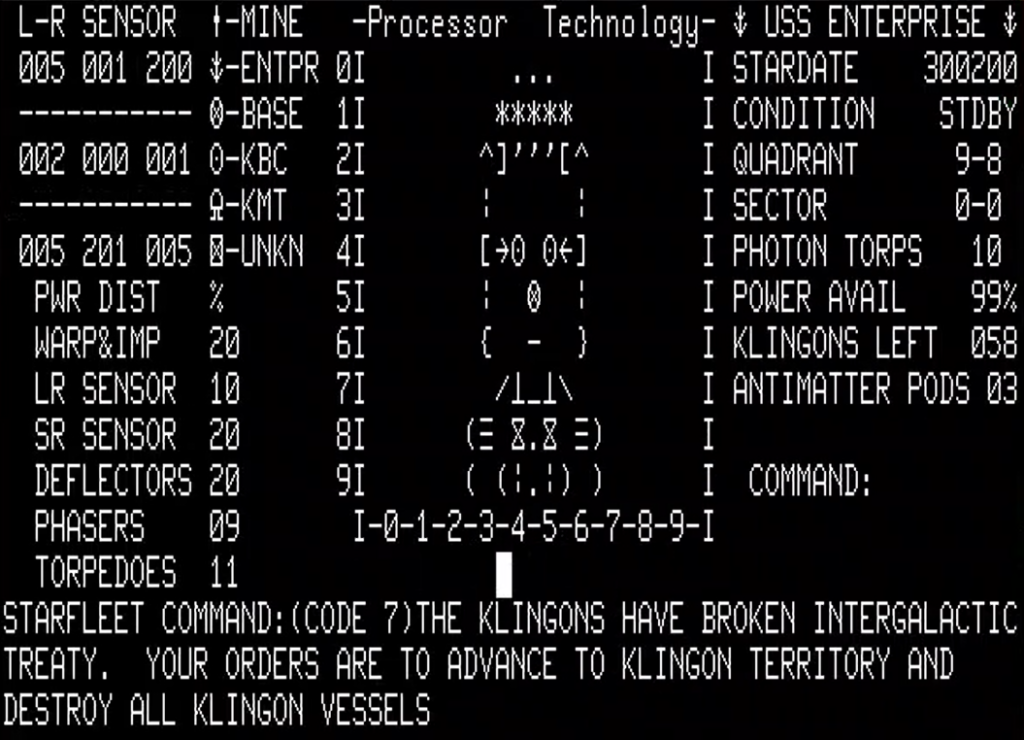
I am thrown into quadrant 9-8, with no immediate threat and the mission to destroy all Klingon spaceships. It is a perfect time to explain the UI.
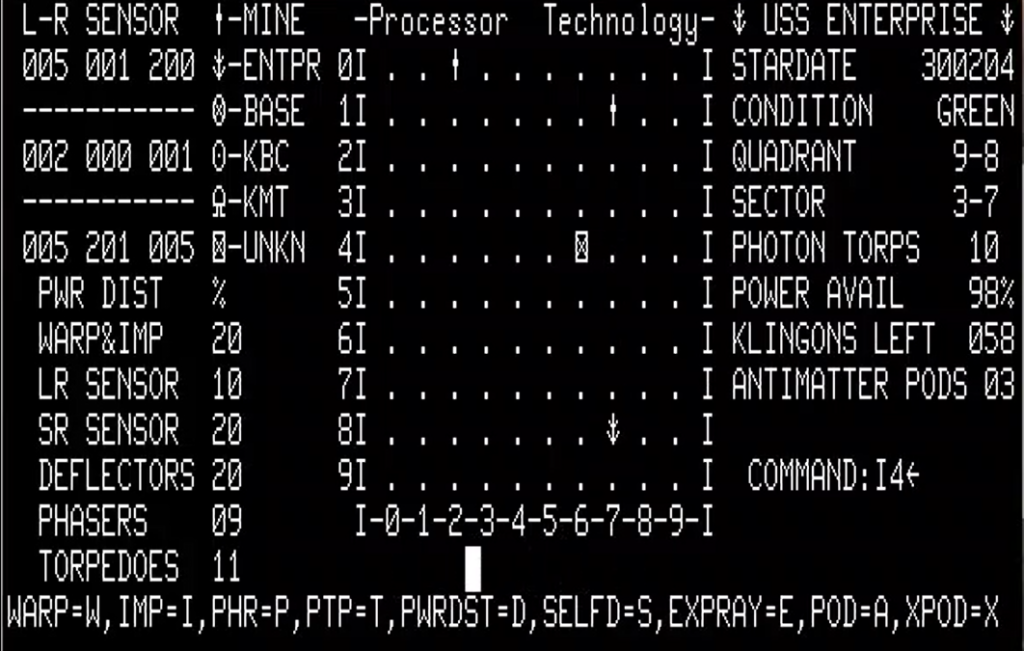
Trek80 reads like any Star Trek [1971] clone : the universe is divided into quadrants (in this case 10×10 of them), themselves divided in sectors (all the “dots”). The USS Enterprise is the little anchor icon in sector 8,7, the only other items in this quadrant are :
- two space mines (the “crosses”) : if anything hits them they go kaboom and blow up the quadrant – and the USS Enterprise with them.
- One unknown object (the “cross in a square”), with a random effect when shot. I have no reason to take that kind of risk at the moment.
Anyone familiar with Mayfield’s Star Trek will also recognize the long-range sensor display in the top left corner, showing the number of Klingons (first number), allied starbases (second number) and stars in each of the neighbouring quadrants.
But enough with the explanation. They are 58 Klingons to kill. I jump into the neighbouring quadrants and destroy a few of them. My “power available” slowly goes down, but luckily I spot a quadrant with a star base. I jump there and destroy the two Klingon ships with my photon torpedoes and my phaser.
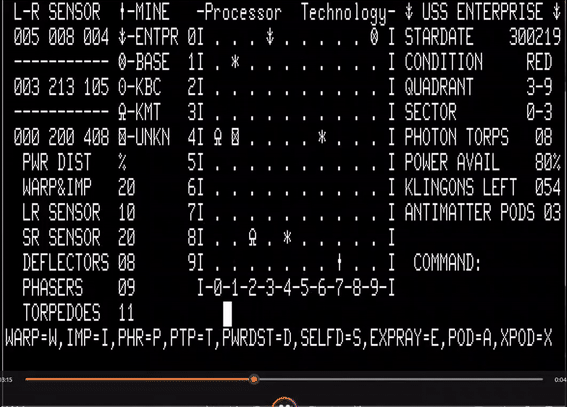
Starbases provide power and weapon refills (photon torpedoes and antimatter pods). Power is the critical resource in the game and it has to be distributed between 6 systems :
- Warp & Impulse for movement. Using “impulse” moves you sector by sector, using “warp” moves you quadrant by quadrant
- Long-range sensor, without which you will not see the neighbouring systems,
- Short-range sensor, without which your “ship” may be displayed in a different location to where it actually is. It is extremely dangerous : if you move into a star or a mine, it’s game over.
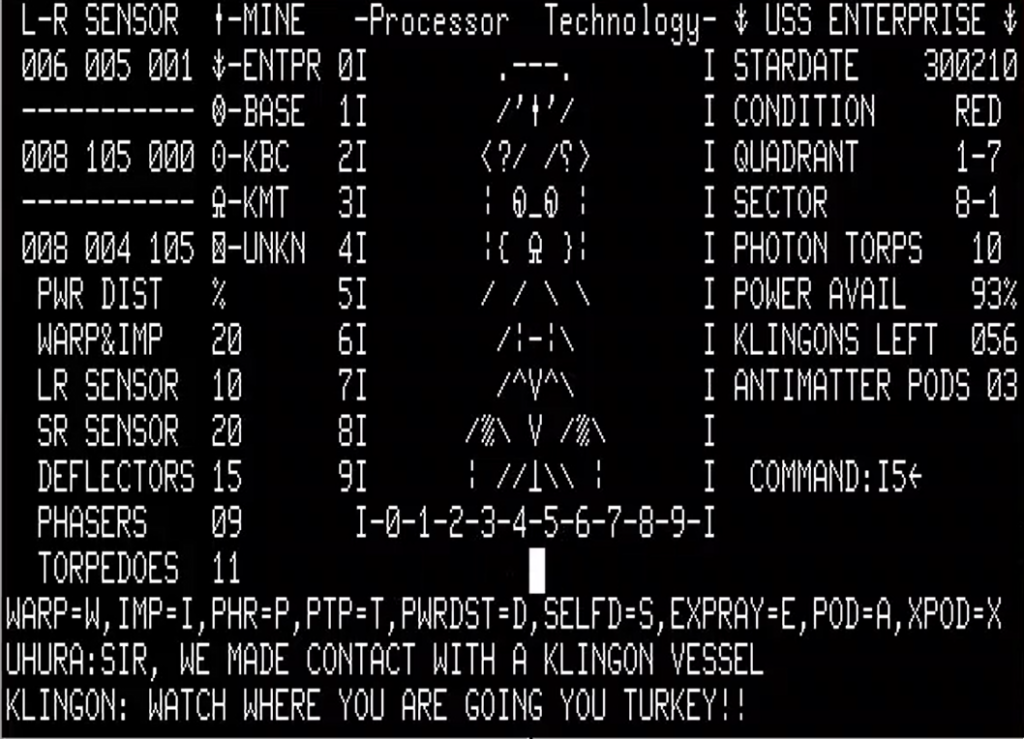
- Deflectors protect you somehow from enemy attack
- Phasers are the primary weapon. They are instant and do not consume ammunition. Their drawback is that several hits may be necessary to destroy a Klingon,
- Torpedoes are secondary weapons. They kill “normal” Klingons instantly, but they move slowly toward their target so Klingons can dodge them. The USS Enterprise can only carry 10 at any given moment.
As enemy ships hit the USS Enterprise, the available power goes down. If the systems are using more power than is available, a warning appears and the player has to decrease the power used lest the ship explodes. In practice, all systems are fully functional above 10 in power so I don’t see the point in having any system above 10, except deflectors and, possibly, phasers.
As in most Star Trek games, once you know the location of a starbase, the game becomes much easier – you just need to have the patience to return to it every few battles. I easily destroy Klingons until I meet a Klingon Battle Cruiser (“0”). The Battle Cruisers hit hard, and are immune to both photon torpedoes and phasers. The only reliable way to destroy them is with antimatter pods, which behave like slow missiles and must be manually detonated.
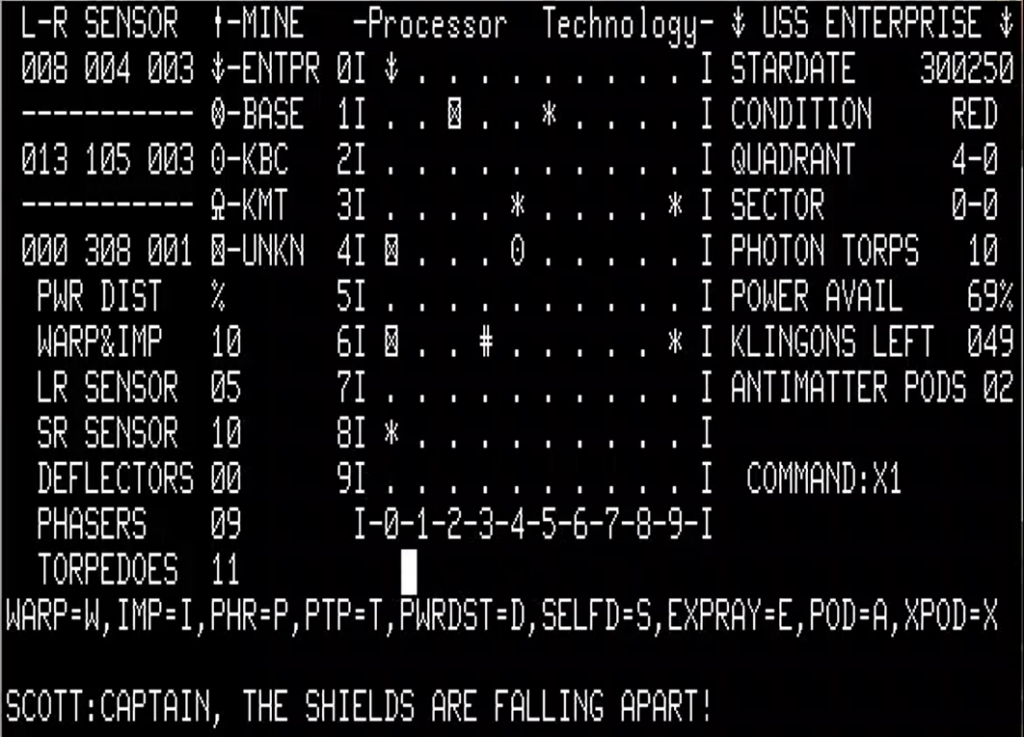
I send an antimatter pod (“#”), but the Battle Cruiser surprises me by moving in my direction : the pod bounces before I can detonate it. I retreat to refill.
The next cruiser I encounter is blown up properly though :
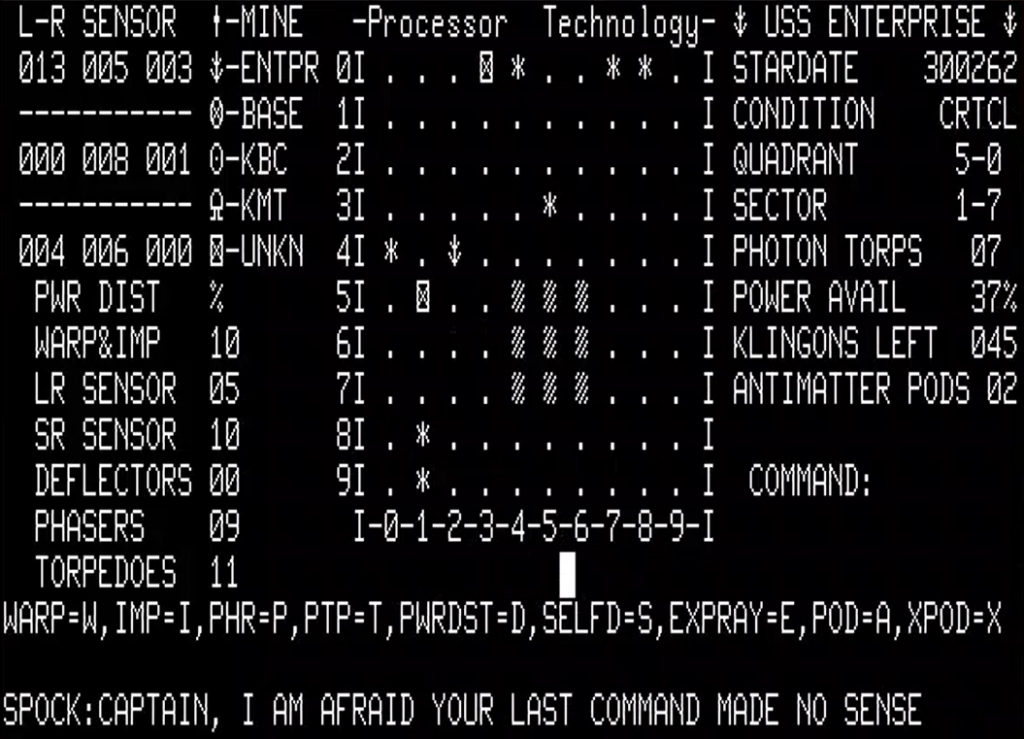
A bit later, I want to refuel far away from a starbase, so I shoot at “unknown objects” hoping to discover a hidden starbase, because yes it can happen. Instead, the first one drains my energy…
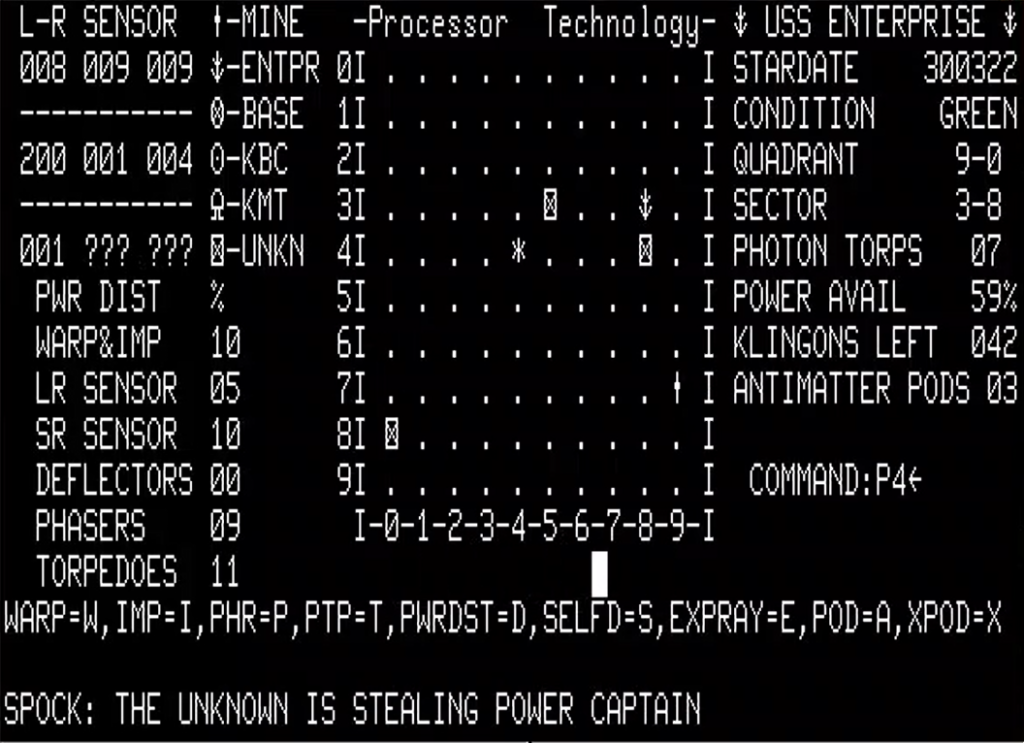
…and the second one spawns mines everywhere in the quadrant. Happily enough, I was on the border of the quadrant so I can just move right and leave it :
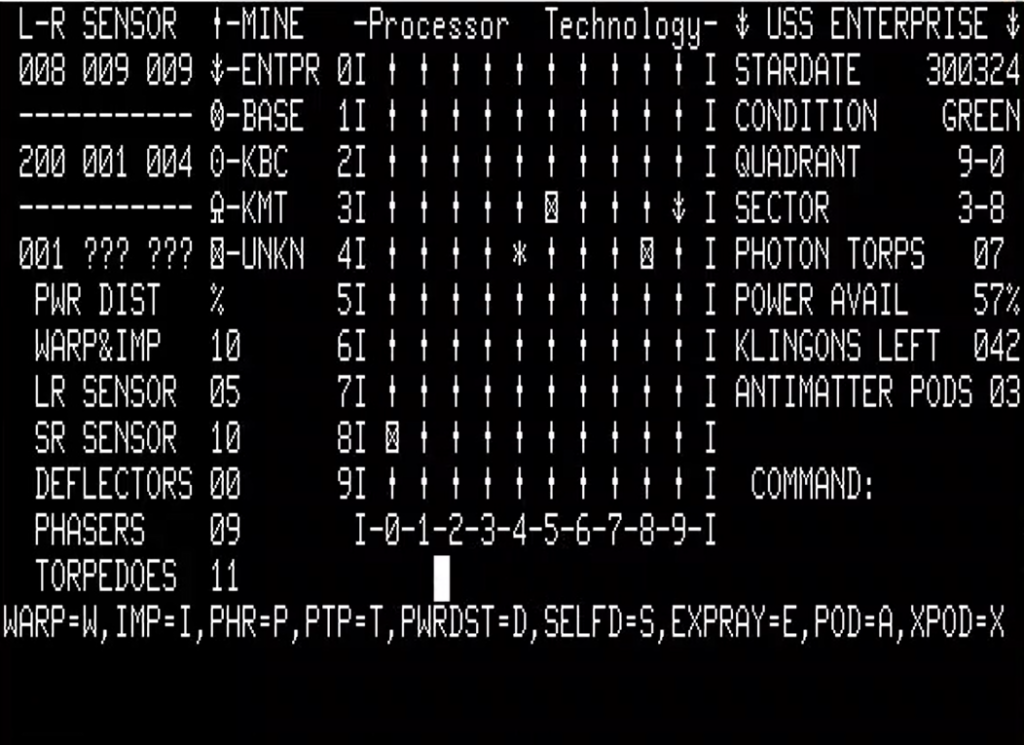
The destruction of the Klingons continues until I engage yet another Battle Cruiser. I send an antimatter pod, but just as I was going to detonate it, it bounces against a small Klingon ship that moved in the way. When the antimatter pod explodes, a mine is caught in the blast…
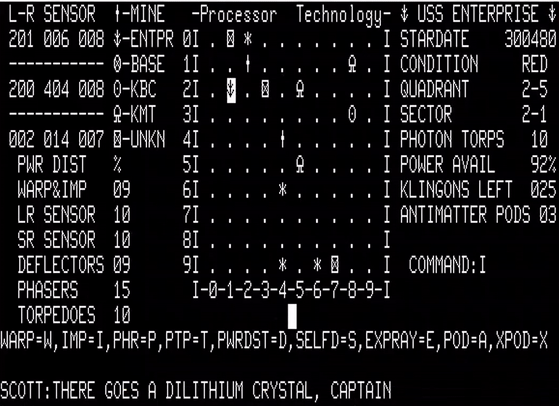
… and that’s instant game over.
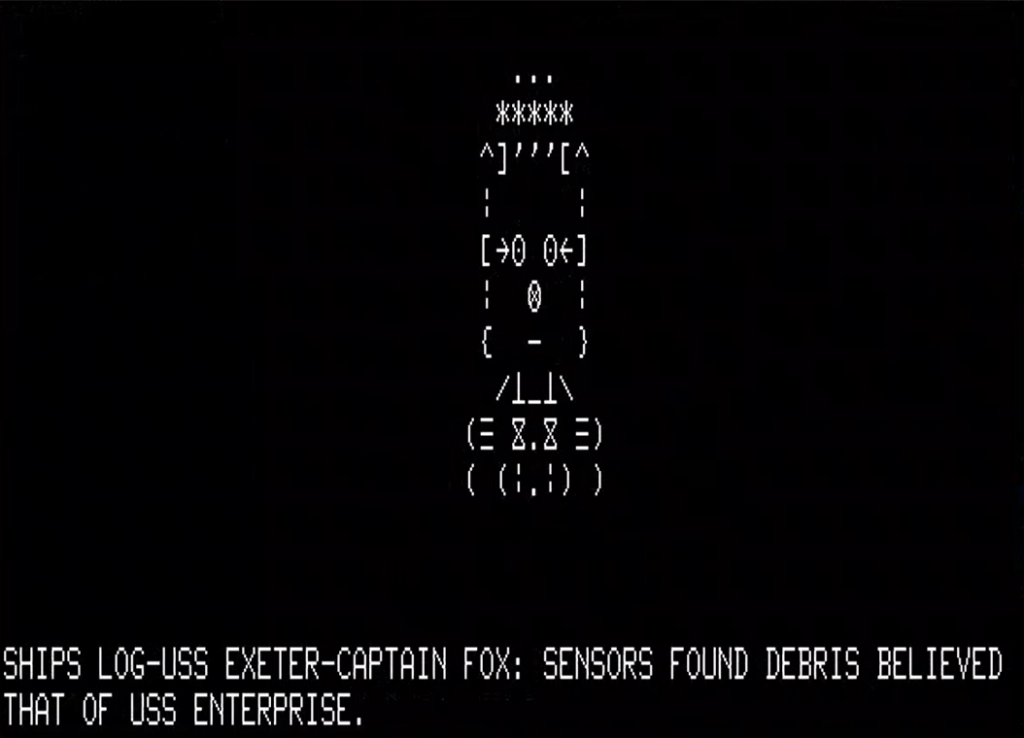
Ratings & Reviews
Trek80 by Steve Dompier, published by Processor Technology, USA.
First release : 1977 for Altair 8800 and SOL computers
Total time tested : Two hours
Average duration of a game : 30 minutes
Complexity: Easy (1/5)
Final Rating : Totally obsolete
Ranking at the time of review : 77/104
Trek80 was one of the earliest dynamic games in home computer history, possibly the second one right after the more visual Target which had been used as a demonstrator. Coded for Altair 8800 by Steve Dompier, it was made possible by the VDM-1, a module designed by Lee Felsenstein which allowed to update the screen anywhere and not just at the bottom like a printer.
I have not said much about Dompier in my earlier article on the VDM-1 and the SOL-20, but he had a critical role in the first meeting of the Homebrew Computer Club. Dompier was as much a computer enthusiast as one could be in 1975. When the Altair 8800 was released, he sent a check of $4000 to MITS requesting every single item on the catalogue, only to be told that most of the advertised items did not exist yet and the rest would ship with a delay. Frustrated, Dompier flew directly from San Francisco to MITS’ headquarters in Albuquerque, and picked up everything that was available, including an Altair 8800. He also met MITS’s founder, Ed Roberts, who had loose lips about the company’s situation. At the Homebrew Computer Club meeting, Dompier was the one who reported about the order book of the Altair 8800 – but also the fact that no memory board above 256 bytes existed yet, triggering a question from Bob Marsh who asked what it would take to build better than 256 bytes.
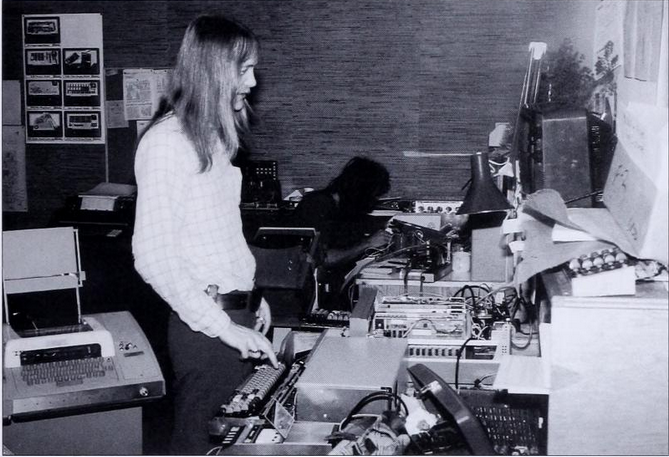
At the second meeting of the Club in April 1975, Dompier brought his Altair and displayed a neat trick. Using the radio interference generated by early computers, he managed to use it to play a song : The Fool on the Hill by the Beatles. After playing another tune (Daisy Bell – A bicycle built for two) and receiving a standing ovation, Dompier announced a new era where computers would be used for unprofessional purposes. Of course, the number of existing mainframe games showed that hobbyists had not waited for the Altair to be unprofessional, and indeed Dompier also liked to program – and play – games, including Star Trek – he had at his home a terminal connected to the Lawrence Hall of Science for that exact purpose.
As Dompier kept being invaluable to Marsh (in particular it was on Dompier’s Altair 8800 that Marsh tested his first memory board), he was ultimately recruited by Processor Technology. He coded Target to serve as a showcase for the VDM-1, and immediately after that started to work on Trek80, though the game was not sold before 1977. In both cases, he put his little April 1975 party trick to good use : the games had sound effects if you could tune a radio to your computer.
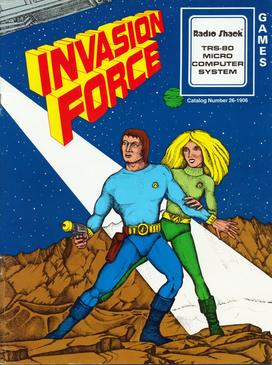
Trek80 received a TRS-80 port – probably authorized – in 1979. Called Invasion Force (the Trek80 on TRS-80 is a traditional Star Trek clone), it replaced everything Star Trek by with made-up names, and upgraded the art of the characters, but is otherwise exactly the same.
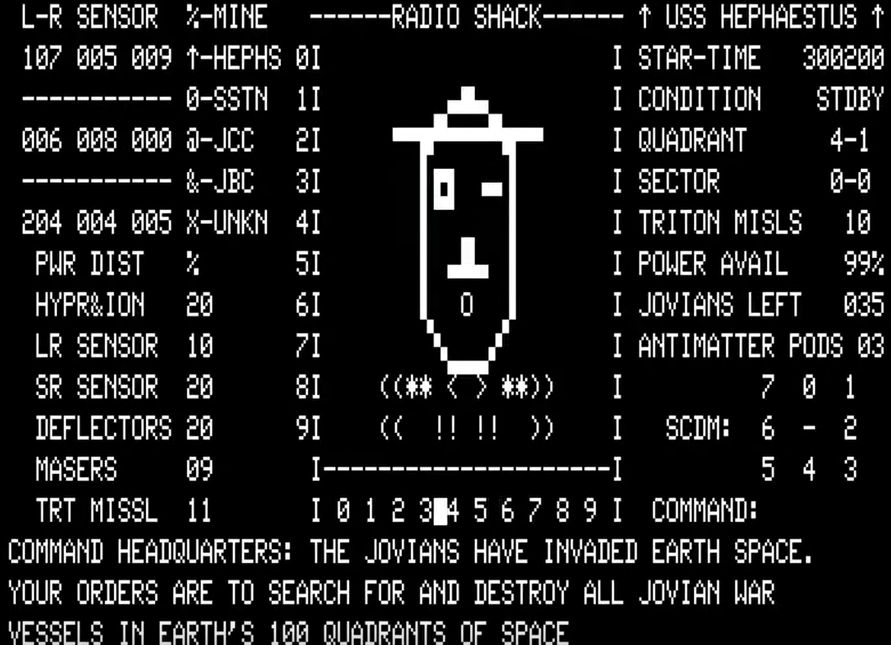
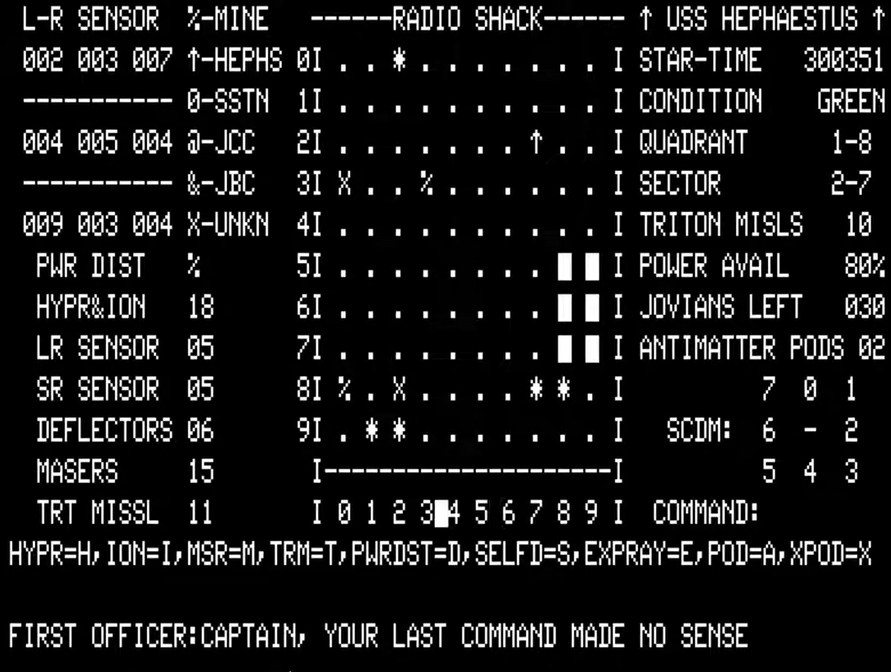
And now, the ratings ! I feel like I should emphasize again that I review this as a modern gamer, so as innovative as it is, a 1976 game is going to look like cave paintings compared to what we play now.
Immersion : Very poor. I applaud the effort on the ASCII character art, but the game is otherwise minimalistic. To give credit where it is due though : four years before Chris Crawford’s Excalibur, Invasion Force did the cool thing of having a novella for a manual.

UI, Clarity of rules and outcome : Adequate. The game is way easier to play than a normal Star Trek because all the information you need is displayed on the screen at all times, but it could have clarified the importance of allocating more or less power to a system.

Systems : Very poor. Once you have understood the game and provided you have the patience to play carefully, you will only die if you can’t find a space station or if you do something stupid like letting a mine blow up. Good Star Trek-clones are those where random events create emergent situations, typically due to unusual or challenging enemies (I still remember the Tholean spider from my Star Trek AAR) or high chaos – high reward options. Alas, in Trek80, enemies are not dangerous enough to force you to use the experimental ray, and “unknown objects” only have a limited set of results when shot :
- fill the map with either mines or more unknown objects,
- bounce your shot randomly (if it hits a mine, then kaboom !),
- drain your energy and/or deactivate some of your system,
- teleport you to another quadrant,
- reveal a starbase.
None of them create interesting situations, and you will soon learn to shoot at unknown objects from the side of the map to avoid being blocked by mines. There is no surprise to find in any other part of the game.
Scenario design & balancing : Terrible. The only customization is the speed of the game, the map feels too large and the sessions too long.
Did I make interesting decisions : No, but I made poor decisions because I was bored.
Final rating : Totally obsolete. Trek80 has some historical interest, but it is too repetitive to be fun. Once you have cleared a couple quadrants you have done everything the game has to offer, and you still have 98 more quadrants to clean up.
The game is just too easy – most of the time you will die because you mistyped an order and collided with a star or a space mine – and you are better-off with most of the other turn-based Star Trek clones.
Contemporary Reviews :
Trek80 received an article in the July 1977 issue of Creative Computing . Alas the reviewers (officially David North, but according to the review David Ahl himself played the game extensively) had issues with their VDM-1 and lacked documentation, so they believed the energy distribution used percentages instead of absolute values and their ship kept blowing up. Nonetheless, the article welcomes the arrival of what they call “graphic games” and states that Trek80 and Spacewar “offer sophistication you won’t find in any coin-operated machine“.
I could find two reviews for Invasion Force, both in February 1981. The Space Gamer calls it a good Star Trek game, but only worth it for those who don’t already own one, as the game becomes tiresome once mastered. The second review is surprisingly found in tabletop wargame specialist Moves and is more positive : “this is a fine game, one of the best of the genre, challenging, complex and amusing“.